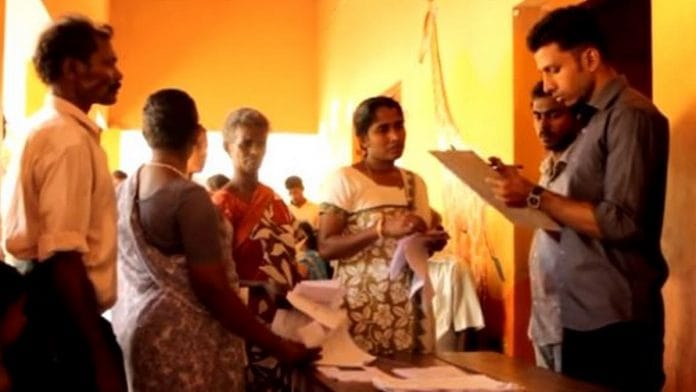New Delhi: The Covid-19 pandemic has adversely impacted Census timelines, with no clarity on when the houselisting and housing census and then the population enumeration can be conducted by the government.
The decadal census is the largest data collection exercise carried out by India and is crucial to assess not only the growth of the population but also their access to basic facilities such as drinking water, sanitation, housing and electricity.
The last Census was held in 2011.
Safety of enumerators, as also the possible danger of the spread of the pandemic through these enumerators, is a risk that has to be taken into account while making the decision about starting the census process, said officials part of the census exercise in different states.
According to the initial plan, the houselisting census was supposed to be held between April and September this year. The population enumeration would have then followed in the last three weeks of February 2021.
The houselisting and housing census provides data on housing and other amenities and assets available to the households.
The data collected through the houselisting census is used to carve out the enumeration blocks, which are then used in the population enumeration phase.
States could choose a 45-day window in the April-September 2020 period and conduct the houselisting survey. However, the population enumeration was to be done at the same time by all the states between 9 and 28 February, 2021.
But the pandemic is likely to delay all these timelines.
“We don’t know the direction and trajectory of the virus. We will have to wait for the curve to flatten. There also needs to be a gap of 3-4 months between the houselisting census and the population enumeration,” said one of the census officials in a southern state.
A census official in one of the northern states pointed out: “Personal contact between the enumerator and respondents cannot be done away with. Enumerators can wear masks and most of the collection will happen on mobile phones but can the government risk the virus spreading through even one enumerator who is going to visit many households?”
He added that no standard operating procedures have been issued by the Registrar General of India (RGI) so far.
One enumerator is usually assigned for around 650-800 people. They are typically school teachers and other government employees.
ThePrint had approached Vivek Joshi, Registrar General and Census Commissioner, for a comment via text but he did not respond.
The Union Budget had allocated Rs 4,568 crore in 2020-21 to Census, Survey and Statistics/Registrar General of India to fund the census exercise.
Also read: From Mandal to Modi, OBC sub-categorisation is caught up in bad politics
States keeping back-end ready
States are, meanwhile, preparing the back-end with appointments of officials, necessary infrastructure, training of the officials involved in the process and drawing up the list of VIPs who will help in spreading of the message to the people. The idea is to prepare the back-end so states can quickly start the exercise when they are asked to.
“We are delivering training manuals to the various blocks for the enumerators who are typically teachers, clerks and other government employees. We are also appointing officials needed for the census and checking if we have adequate number of enumerators and supervisors to conduct the census,” said Ashish Singhmar, Director of Census Operations in Jharkhand.
Mobile app to collect data could speed up the process
The plan is to use mobile phones to conduct the surveys throughout the country with limited exceptions. This would help in faster collation, segregation of data and eventual processing and dissemination.
“Enumerators are being incentivised for capturing data through App on mobile phones, through a higher payment. Enumerators are being paid Rs 25,000 if mobile phones are used, else they will be paid Rs 17,500,” Singhmar said.
Also read: If Modi govt had followed this 2018 SC order, migrants wouldn’t have had to flee the cities






